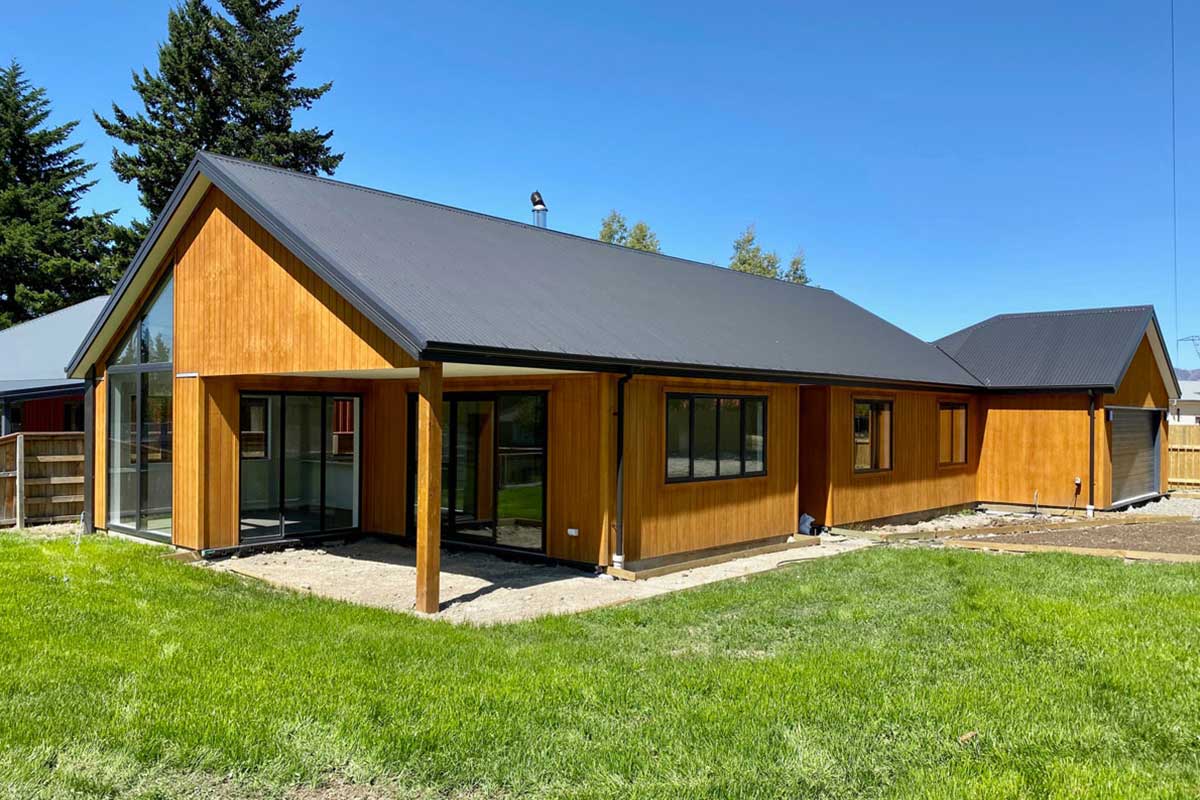Overview of Asbestos
Asbestos is a naturally occurring mineral made up of many small fibres. These fibres are very strong and are highly resistant to heat, fire, chemicals, and wear. Because of these special properties it was widely used in industry as an insulator, building material, and in Asbestos Roofs and household products for many years. However, as most of us now know, Asbestos is a very dangerous substance. Asbestos is the single biggest cause of deaths from work-related disease. Approximately 170 people in New Zealand die each year from asbestos-related diseases. Breathing in airborne asbestos fibres is a serious risk to health – once the fibres are breathed in, they lodge in the lungs and may cause asbestosis, lung cancer, or mesothelioma. We have put together this Complete NZ Asbestos Guide to help you understand what asbestos is and why it’s important to make it safe if you discover it in your property.
A Little Bit of History About Asbestos
Early Use of Asbestos
While we mostly hear about asbestos being used for Asbestos Roofs, asbestos occurs naturally all around the world. Archaeologists have uncovered asbestos fibres in debris dating back to the Stone Age. It is believed that as early as 4000 B.C., asbestos’ long hair-like fibres were used for wicks in lamps and candles. Between 2000-3000 B.C., embalmed bodies of Egyptian pharaohs were wrapped in asbestos cloth to protect the bodies from deterioration. In Finland, clay pots dating back to 2500 B.C. contained asbestos fibres, which are believed to have strengthened the pots and made them resistant to fire.
The Greeks are reported to have used asbestos shrouds to wrap their dead before tossing their bodies onto the funeral pyre to prevent their ashes from being mixed with those of the fire itself. Ancient Romans were said to have woven asbestos fibres into a cloth-like material that was then sewn into tablecloths and napkins. They cleaned them by throwing them onto the fire and they came out undamaged and often whiter than when they went in!
Fun fact: Asbestos means ‘Inextinguishable’ in Greek.
Industrial and Modern Use of Asbestos
Asbestos manufacturing was not a flourishing industry until the late 1800s, when the start of the Industrial Revolution helped sustain strong and steady growth of the industry.
Asbestos’ resistance to chemicals, heat, water and electricity made it an excellent insulator for the steam engines, turbines, boilers, ovens, and electrical generators that powered the Industrial Revolution. The malleable properties of asbestos made it an important building, binding, and strengthening commodity. The U.S. armed forces also used asbestos to prevent fires.
In the past, the special properties of asbestos made it popular for:
- asbestos-cement sheet cladding, roofing and drainage pipes
- backing material for floor tiles and vinyl sheets
- insulation board for thermal protection (e.g. around fire places)
- textured ceilings and sprayed-on wall surfaces
- lagging for insulation around pipes, heaters and hot water cylinders
- car, truck and airplane brake pads and linings, clutches, seals, and gaskets
- textiles
- spouting and guttering components.
Asbestos was also used in household items, such as oven gloves, ironing board pads, simmer mats for stoves, and fire blankets.
See more asbestos containing materials here.

An old Asbestolux advert
The Greeks and Romans were already documenting the harmful effects of asbestos on those who mined the silken material from ancient stone quarries. And by 1897, an Austrian doctor had attributed pulmonary troubles in one of his patients to the inhalation of asbestos dust. An 1898 report regarding the asbestos manufacturing process in England, where factories had been routinely inspected since 1833 to protect the health and safety of workers, cited “widespread damage and injury of the lungs, due to the dusty surrounding of the asbestos mill.”
Despite these consistent and increasing health warnings, asbestos mining and manufacturing continued and in 1910, world production exceeded 109,000 metric tonnes, more than three times the total in 1900.
U.S. consumption of asbestos peaked in 1973 at 804,000 tonnes. World demand for asbestos peaked around 1977. Some 25 countries were producing almost 4.8 million metric tonnes per year, and 85 countries were producing thousands of asbestos products.
North-west of Nelson, in the Upper Takaka Valley, is New Zealand’s only commercially harvested asbestos mine. A low-grade Chrysotile was mined here from 1908 to 1917 but only 100 tonnes was washed and taken out by packhorse. A new power scheme enabled work to renew and between 1940 and 1949, 40 tonnes a month was mined by the Hume Company. This continued to 1964, when, due to the short length of its fibre, the limited commercial viability forced mining to cease.

Asbestos factory in India
Asbestos Roofing and Roofing Materials
Asbestos took off as a roofing product in the early 1900s. However, inventors had begun experimenting with adding asbestos to cement and asphalt in the late 1800s. Initial asbestos roof products had severe issues. Wood shakes and bare asphalt shingles were highly flammable, concrete tile roofing products were cumbersome, and metal rusted.
In 1893, a European chemist filed the first patent for asbestos cement roofing shingles. He called it ‘Eternit’ after the Latin term for everlasting. By 1907, asbestos became a prime roofing material additive for making shingles based on an asbestos-asphalt blend. Shingles containing asbestos were inflammable, and that was highly popular with civic planners and insurance companies.
Asbestos fibres were also lightweight, which solved structural issues for heavy roof loads. Asbestos particles made asphalt-based roofing durable and long-lasting. Asbestos wouldn’t rot, rust, conduct electricity, nor react to heat. And asbestos was easy to work with, widely sourced and low-cost to purchase.
Shingles weren’t the only roof product containing asbestos materials. In fact, most other roofing products produced in the early to mid-twentieth century contained asbestos. It was a universal solution to roof concerns.
Asbestos Bans and Regulations
By the late 1970s, the public was beginning to understand the connection between asbestos exposure and debilitating lung diseases and a dramatic decline began in the use of asbestos throughout the industrialised nations.
By 2005, the European Union and many other countries had banned asbestos. It became illegal to import blue and brown asbestos into New Zealand in its raw form from 1984 and in 2002 the import of chrysotile (white) asbestos was also banned.
Only on 1 October 2016 did it become illegal to import all asbestos-containing products into New Zealand.
It is important to be aware that despite the relatively recent ban, products and appliances with asbestos content may still be around and are still prevalent in New Zealand’s infrastructure, particularly in buildings built, altered, or refurbished from 1940 until the mid 1980s.
Today, working with asbestos in New Zealand is prohibited, including the manufacture, supply, storage, install, sale or transport of products containing asbestos. The airborne contamination standard, or the average concentration over any eight-hour period, is 0.1 fibres per millilitre of air. This level cannot be exceeded at any workplace, unless it is inside an enclosure using negative pressure.
Harmful Effects of Asbestos
Intact materials containing asbestos do not pose a risk. Potential health problems occur if asbestos fibres become airborne.
Asbestos related diseases include:
- asbestosis (scarring of lung tissue)
- mesothelioma (malignant tumours, cancers that develop around the lungs or intestine) – for advice visit the NZ Cancer Society Mesothelioma Page
- pleural plaques (thickening of membranes around the lungs)
- cancer of the lung, larynx and ovary.
Asbestos is a proven human carcinogen and all forms of asbestos can cause cancer. The greater the exposure, and the longer the time of exposure, the greater the risk of developing an asbestos-related disease. Smoking can increase the risk of developing lung cancer following exposure to asbestos.

Deaths related to asbestos exposure are expected to continue for decades because of the long latency period associated with asbestos-related diseases such as mesothelioma. It can take from 10 to 50 years for asbestos fibre exposure to turn cancerous.
Anyone who is at risk of airborne asbestos exposure above the trace level is required to wear suitable personal protective equipment.
People concerned about asbestos exposure should visit their doctor or other medical provider. Based on the person’s detailed exposure and medical history and a physical exam, the doctor will decide if additional testing is needed.
Different Types of Asbestos and Asbestos Roofs
Asbestos is a term used to refer to six naturally occurring silicate minerals: chrysotile, amosite, crocidolite, tremolite, anthophyllite and actinolite. All are composed of long and thin fibrous crystals, each fibre being composed of many microscopic ‘fibrils’ that can be released into the atmosphere by abrasion and other processes.
The most common types of asbestos fibre you are likely to find are:
- chrysotile (white)
- amosite (brown)
- crocidolite (blue)
Chrysotile, a polymorph of the mineral serpentine, is the best-known type and makes up about about 95% of all asbestos in commercial use. Each type has a different associated risk level with white being the least dangerous and blue being the most. The colour differences are very slight and laboratory analysis is needed to identify different types of asbestos fibre.
Learn more about the different types of Asbestos.
Friable and Non-Friable Asbestos
Asbestos falls into two categories: friable and non-friable.
Friable asbestos is in a powder form or able to be crumbled, pulverised, or reduced to a powder by hand pressure when dry. While all asbestos has the potential to become airborne, friable is more likely to become airborne.
Non-friable asbestos is not in a powder or cannot be crumbled, pulverised, or reduced to a powder by hand pressure when dry. It is usually in a bonded form, such as asbestos cement sheet in good condition.

Friable asbestos
Asbestos fibres found their way into these roofing products:
- Roofing tar and asphalt liquids
- Roofing felt and underlayment
- Roofing caulking, mastic and sealant
- Roofing cement and cement-based shingles (e.g. decramastic tiles)
- Roof flashings and vents
- Roof flat-sheets and corrugated asbestos roofing
How to Identify Asbestos in Your Building or Roof
If your building is old and/or has a roof made with any of the above roofing materials, you may have asbestos. However, the only sure and safe way to know if you have asbestos is to get your building inspected by a licensed professional. If you are working on renovations and you suspect asbestos, it’s important to stop working immediately (do not disturb or remove any more material) and notify an expert.
Should You Repair or Replace Your Asbestos Walls/Roof?
Many home and business owners assume that if there is asbestos present in their property’s materials, they have no choice but to completely remove and replace them. However, a professional and experienced asbestos removal company may be able to encapsulate the material to make the area safe. This encapsulation is stated as being only a temporary solution by the approved code of practice and encapsulated material will need to be inspected every 5 years to ensure the area is safe.
Who Can Inspect, Repair, and Remove Asbestos?
The laws surrounding asbestos have tightened considerably in New Zealand in recent years and you will need to contract the services of a professional licensed specialist. There are two classes of licence for the removal of asbestos. A Class A certificate means the Licensed Asbestos Assessor can dispose of any type and quantity of asbestos dust and fibres safely and a Class B licence allows the removal of non-friable asbestos materials (solid objects) only.
A licensed asbestos assessor provides air quality monitoring during removal work, inspects the finished job, and provides a clearance certificate.
Contact our specialist team at Ambient Construction for information and advice.

Disposal of Asbestos
In most developed countries, asbestos is typically disposed of as hazardous waste in designated landfill sites.
Asbestos can be destroyed by ultra-high-temperature incineration. A process of thermal decomposition at 1,000–1,250 °C produces a mixture of non-hazardous silicon-based wastes, and at temperatures above 1,250 °C it produces silicate glass. Microwave thermal treatment can be used in an industrial manufacturing process to transform asbestos and asbestos-containing waste into porcelain stoneware tiles, porous single-fired wall tiles, and ceramic bricks.
WorkSafe New Zealand’s Approved Code of Practice provides guidelines on the disposal of asbestos in NZ, meeting the requirements of the Health and Safety at Work (Asbestos) Regulations 2016. A certificate of competence and asbestos removal licence are required.
All removal work needs to be performed safely. Suitable controls need to be in place to ensure that the risks from asbestos have been minimised; including correct use of Personal Protective Equipment (PPE), Respiratory Protective Equipment (RPE), safe methods of work, decontamination facilities and the disposal of all asbestos waste in a licensed landfill.
Find out more detailed information about the management and removal of asbestos.
Useful Resources
In this NZ Asbestos Guide we have tried to include all the important points to help you understand asbestos. For more information, and specific laws and regulations, check out these extra resources:
Worksafe Resources
WorkSafe NZ has a target of a 50% reduction in asbestos-related disease by 2040. The Approved Code of Practice for the Management and Removal of Asbestos outlines guidance for managing and removing asbestos in the workplace. Included is information and guidance on keeping safe around asbestos, like the types of work allowed when working with asbestos, how to identify and manage asbestos and asbestos-containing material in the workplace, prohibited and restricted tools and equipment, personal protective equipment, and health monitoring.
The code sets out WorkSafe’s expectations for working safely with asbestos and is designed for businesses that manage or control workplaces, carry out asbestos roof removal, or asbestos-related work, and licensed asbestos assessors. The code applies to landlords too, but not to home occupants doing DIY.
- Worksafe Code of Practice.
- Information for home owners – what to do if the renovations involve removing or disturbing asbestos containing materials.
- Information for residential landlords – what to do if planned work may involve asbestos.
- Asbestos management plans – find out what it is and when your business needs one.
Other Resources
- Asbestos Exposure and Reducing Exposure – Agency for Toxic Substances and Disease Registry.
- Asbestos Exposure in New Zealand: Review of the Scientific Evidence of Non-occupational Risks – a 2015 report from the Royal Society of New Zealand and Sir Peter Gluckman
Ambient Construction is fully licensed to repair, remove, and replace all types of asbestos roofing. Contact us for a chat about your requirements.





